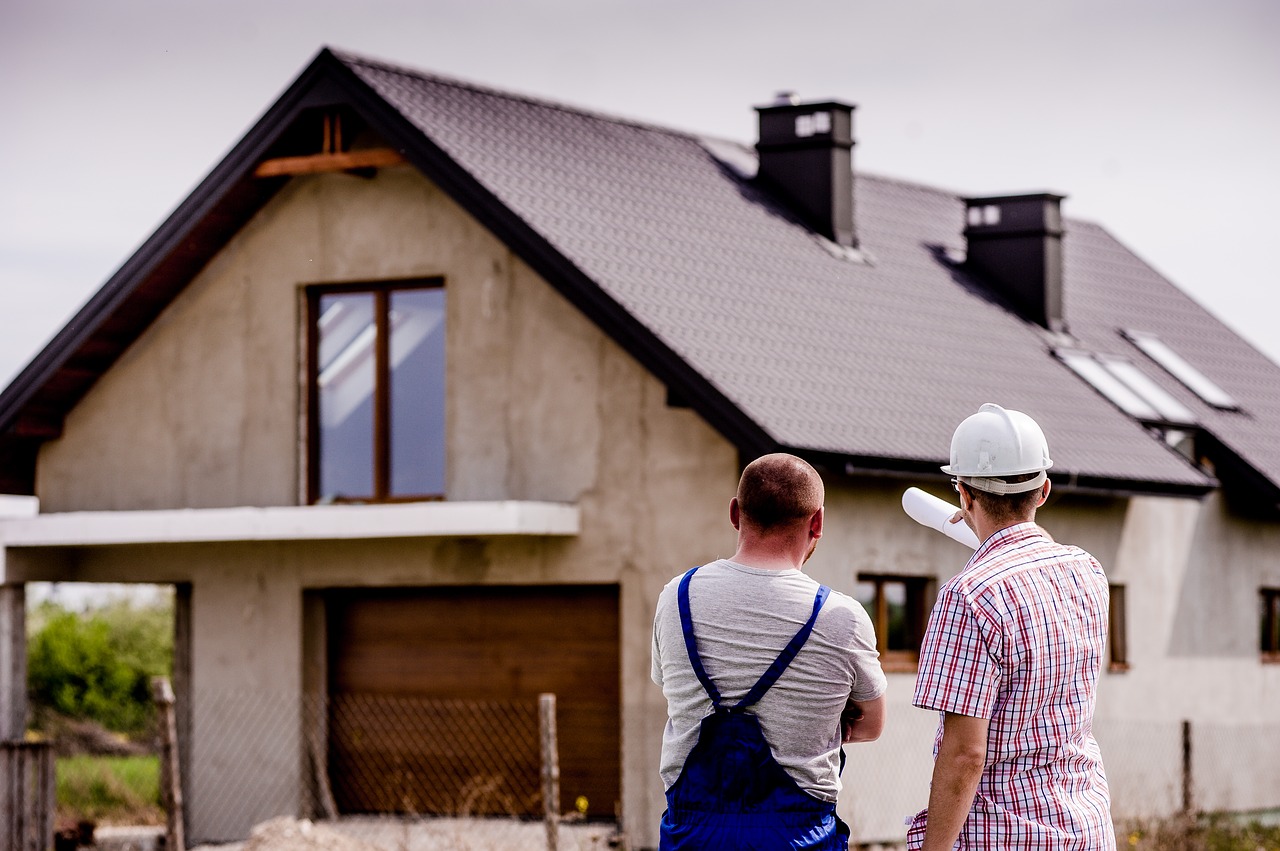
California Building Code Updates in 2024: Advancing Sustainability in Construction
Embodied Carbon Reduction Mandate
In a landmark decision, California is set to revolutionize its building codes, addressing a crucial aspect often overlooked in construction policies—embodied carbon. This term encompasses emissions generated throughout a building’s life cycle, from manufacturing to waste disposal. Until now, complexities in supply chains, technological barriers, and a lack of standardized data hindered the effective integration of embodied carbon considerations.

California’s Trailblazing Building Codes: A Legacy of Sustainability and Innovation
California has long been at the forefront of building code innovation, spearheading initiatives to enhance the sustainability and resilience of the built environment. This commitment to forward-thinking construction practices dates back to the 1970s when the state introduced its groundbreaking energy code. This pioneering move laid the foundation for a series of progressive building standards, culminating in the implementation of CALGreen, the mandatory statewide green building code.
CALGreen, a testament to California’s proactive approach to sustainability, has positioned the state as a trendsetter in shaping national building standards. By establishing stringent requirements for energy efficiency, water conservation, and sustainable material use, CALGreen has set a high bar for other states to emulate.
In a recent landmark decision, the California Building Standards Commission and the Division of the State Architect unanimously approved two revolutionary building code changes. These changes, specifically targeting embodied carbon reduction, are poised to bring about a seismic shift in the construction industry, further solidifying California’s status as a leader in sustainable building practices.
The approved changes, effective July 1, 2024, focus on large-scale structures, applying to commercial buildings exceeding 100,000 square feet and schools surpassing 50,000 square feet. By prioritizing these significant projects, California aims to make substantial strides in mitigating the environmental impact of the construction sector.
The new building code requirements will mandate that these large-scale projects undergo embodied carbon calculations, encompassing the greenhouse gas emissions associated with the entire lifecycle of the building, from material extraction and manufacturing to transportation, construction, and demolition. This comprehensive approach to embodied carbon assessment will provide valuable insights into the environmental impact of buildings, enabling designers and developers to make informed decisions that minimize their carbon footprint.
In addition to embodied carbon calculations, the new building code changes will also introduce a range of measures to reduce the environmental impact of construction materials. These measures include:
- Requiring the use of low-carbon materials, such as recycled content and bio-based materials
- Implementing procurement policies that prioritize environmentally responsible sourcing
- Encouraging the adoption of prefabrication and modular construction techniques to minimize on-site waste and emissions
The groundbreaking changes to California’s building codes underscore the state’s unwavering commitment to sustainability and innovation in the construction industry. By tackling embodied carbon emissions, a previously overlooked yet significant contributor to the environmental impact of buildings, California is setting a new standard for sustainable construction practices that will undoubtedly inspire other states to follow suit.
Implementation Date: Ushering in a New Era of Sustainable Building
Effective July 1, 2024, a set of groundbreaking changes will reshape the landscape of sustainable building practices within the state. This implementation date marks a pivotal moment, signifying the beginning of a new era characterized by enhanced environmental stewardship and innovative design strategies.
Flexible Compliance Paths for a Smooth Transition
To ensure a seamless transition towards these new standards, projects will have the option to select from three distinct compliance paths. Each path offers a unique approach to achieving the overarching goal of sustainability, catering to the diverse needs and preferences of project stakeholders.
Path 1: Embracing the Value of Existing Structures
The first compliance path prioritizes the preservation and reuse of existing structures, encouraging the retention of at least 45% of existing building components. This approach not only minimizes the environmental impact associated with demolition and new construction but also honors the rich architectural heritage of the state.
Path 2: Material Selection with Environmental Consciousness
The second compliance path focuses on the selection of building materials with reduced environmental impact. This path mandates the use of materials that adhere to specified emission limits, ensuring that the entire construction process aligns with the principles of sustainability.
Path 3: Performance-Based Approach for Holistic Sustainability
The third compliance path embraces a performance-based approach, empowering project teams to demonstrate compliance through a comprehensive whole-building life cycle assessment analysis. This holistic evaluation considers the environmental impact of the building throughout its entire lifespan, from material sourcing and construction to operation and eventual demolition.
By providing a range of compliance options, the new regulations recognize the multifaceted nature of sustainability and empower project teams to tailor their approaches to achieve shared environmental goals. This flexibility fosters innovation and encourages the adoption of creative solutions that align with the specific context of each project.
Rippling Effects: A Catalyst for Transformative Change
California’s pioneering building codes are poised to unleash a wave of transformative change that extends far beyond the state’s borders. With its robust economy and leading role in the construction industry, California serves as a beacon for innovation, inspiring similar initiatives nationwide. The state’s bold steps towards sustainability are expected to galvanize a collective commitment to environmental responsibility, shaping the future of building practices across the country.
A Catalyst for Sustainable Material Innovation
These code changes will undoubtedly ignite a surge in innovation within the building materials sector. As California sets a benchmark for embodied carbon reduction, the industry will witness a rapid acceleration in the development and adoption of sustainable construction materials. This shift will not only contribute to the achievement of environmental goals but also drive economic growth and job creation.
A Paradigm Shift in Building Design and Construction
The adoption of these codes will usher in a paradigm shift in building design and construction. Architects and engineers will be compelled to rethink conventional approaches and embrace innovative strategies that minimize embodied carbon emissions. This transformation will lead to the creation of a new generation of buildings that are not only energy-efficient but also resource-efficient and environmentally responsible.
A Driving Force for Sustainable Urban Development
As California takes a leading role in the transition towards sustainable building practices, it will also play a pivotal role in shaping the future of urban development. The state’s commitment to sustainability will inspire cities across the nation to embrace green building practices, leading to the creation of more livable, healthier, and environmentally responsible urban environments.

USGBC and Coalition Advocacy: A Collaborative Approach to Greener Building Codes
The U.S. Green Building Council (USGBC), a leading advocate for sustainable building practices, emerged as a pivotal force within the coalition supporting the adoption of updated building codes. Their active engagement epitomizes the collaborative spirit that has driven the industry towards greener and more environmentally responsible standards.
At the forefront of this coalition stood the American Institute of Architects (AIA) California, whose unwavering dedication to promoting the updated building code played a crucial role in its implementation. Their advocacy highlights the transformative potential of industry-wide collaboration in fostering positive change.
The combined efforts of USGBC, AIA California, and the broader coalition represent a significant step forward in the pursuit of sustainable building practices. Their collective voice has served to amplify the call for greener building standards, ensuring that sustainability remains at the forefront of the industry’s agenda.
Builders and developers are poised to play a pivotal role in the implementation of the updated building codes, with embodied carbon considerations becoming an integral part of project planning and design processes. The alternative compliance paths embedded within the codes offer flexibility, allowing for strategic choices tailored to specific sustainability goals.
Embodied Carbon in Project Planning and Design
Embodied carbon, the total greenhouse gas emissions associated with a building’s materials and construction, must now be accounted for at the outset of project development. Builders and developers should collaborate closely with architects, engineers, and sustainability consultants to assess the embodied carbon footprint of various material options and identify opportunities for reduction.
Harnessing the Power of Alternative Compliance Paths
The updated building codes provide alternative pathways for compliance, enabling builders and developers to explore innovative strategies for reducing embodied carbon emissions. These pathways may include the use of low-carbon materials, adoption of advanced construction techniques, and implementation of carbon offset programs.
Leveraging Available Resources and Support
A comprehensive suite of resources and support mechanisms will be made available to assist the industry in navigating the new embodied carbon requirements. Builders and developers are encouraged to actively seek out these resources, which may include:
- Embodied carbon assessment tools to evaluate the embodied carbon footprint of different building materials and design scenarios.
- Educational workshops and training programs to enhance understanding of embodied carbon calculation methods and mitigation strategies.
- Technical guidance and support from industry experts and regulatory bodies to ensure compliance and navigate any challenges.
By proactively engaging with these resources, builders and developers can effectively integrate embodied carbon considerations into their project planning and design processes, contributing to a more sustainable and environmentally responsible construction industry.
Future Trends and Sustainability Initiatives: Embodied Carbon as a Catalyst for Greener California
The adoption of embodied carbon reduction measures in California’s building standards marks a significant milestone in the state’s unwavering commitment to sustainability. This progressive step not only addresses the environmental impact of building materials and construction processes but also establishes a foundation for further enhancements to the state’s building standards in the years to come.
Embodied Carbon: A Driving Force for Future Building Code Advancements
Incorporating embodied carbon considerations into the building code sets the stage for a future characterized by continuous innovation and adaptation in the realm of sustainable construction. As technologies evolve and industry practices adapt, California’s building standards are poised to reflect these advancements, ensuring that embodied carbon remains a key metric in the pursuit of greener buildings.
Aligning with California’s Broader Sustainability Agenda
The changes to California’s building code align seamlessly with the state’s broader sustainability goals, which encompass a comprehensive approach to environmental stewardship. By integrating embodied carbon considerations into the construction industry, California is taking a proactive step towards reducing its overall carbon footprint and fostering a more resilient and eco-friendly built environment.
A Beacon of Sustainability for Other States and Countries
California’s leadership in addressing embodied carbon emissions serves as a beacon for other states and countries aspiring to adopt similar measures. By demonstrating the feasibility and effectiveness of incorporating embodied carbon considerations into building standards, California is paving the way for a global shift towards more sustainable construction practices.
As California continues to pioneer advancements in embodied carbon reduction strategies, it is anticipated that other regions will follow suit, leading to a collective effort to minimize the environmental impact of the construction industry worldwide. This global movement towards sustainable construction practices holds the potential to significantly reduce greenhouse gas emissions and contribute to a more environmentally conscious future.
Conclusion
In conclusion, California’s building code updates in 2024 mark a significant milestone in the state’s journey toward a more sustainable and environmentally conscious construction industry. The reduction of embodied carbon, effective from July 1, 2024, positions California as a frontrunner in fostering innovation, encouraging green building practices, and influencing nationwide standards. As the industry embraces these changes, the outlook for sustainable construction in California appears promising, setting a high bar for future advancements in building standards.

Jason Somers, President & Founder of Crest Real Estate
With over 15 years of professional experience in the Los Angeles luxury real estate market, Jason Somers has the background, judgement and track record to provide an unparalleled level of real estate services. His widespread knowledge helps clients identify and acquire income producing properties and value-ad development opportunities.
Learn more about Jason Somers or contact us.



